A few months ago, I went to a potluck dinner party. I brought the dish I bring to every collective food gathering: “Paul’s Pleasant Cucumber Salad,” a fresh, sweet-and-sour salad recipe I learned from a cookbook my mom gave me when I moved out on my own. Of the dishes I can make, it’s my mom’s favourite, and even though she lives on the other side of the country, I feel so much love and closeness every time I make it and share it with people.
Other dinner guests, similarly, brought dishes dear to them. Some contributions had special significance, others didn’t—chosen because they were crowd-pleasers, or for their convenience.
As we ate, we shared stories about the things we had brought, and we reflected on the various ways food brings us into relation with our chosen people as well as strangers, and how food can make all manner of spaces intimate and tactile. We talked about art that moves us. I had a conversation with a woman who sat across from me, who I had just met for the first time, about IKEA’s new catalogue and the politically placating “utopia is furniture” rhetoric it employed.
Around the table, we shared stories about the books and things we read that changed our lives. We talked about the importance of objects to the process of establishing and building spaces.
The dinner party offered a rare opportunity to get to the heart, and take real sustenance through dialogue, something I don’t often feel or experience at many artist talks—a fact I note because this dinner party was also, explicitly, an artist talk for Amy Wong’s exhibition “The Art of Hanging Pictures” at Eyelevel Gallery in Halifax.
The majority of artist talks I’ve attended follow a standard format: an introduction, a description of past works in chronological order, an overview of current projects, and so on.
But this dinner party made me wonder: What is an artist talk? What is its purpose? What is the history of the artist talk? Has it always been an artist showing images to an attentive audience? Or could it be something more?
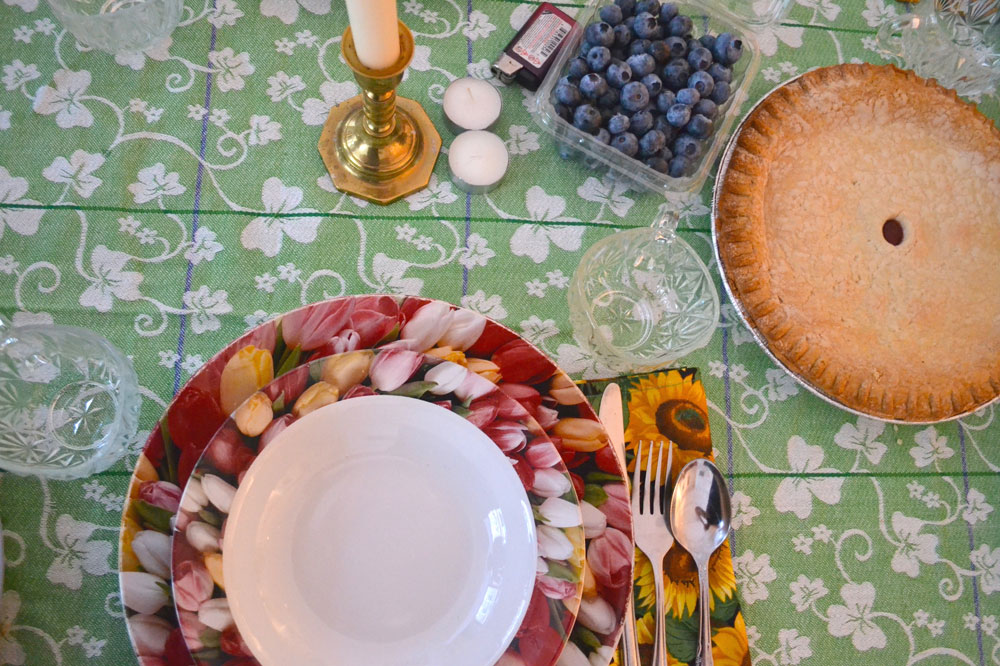 Photo: Em Lawrence
Photo: Em Lawrence
In the West, artist talks are tied to the formation of art academies in the 16th century, and their mandate to elevate the visual arts to the same esteemed level as music and poetry, through the instruction of theory as well as technical practice.
English painter Joshua Reynolds, who in 1768 became the first president of the Royal Academy of Arts in London, addressed this theme in his lecture series Discourses.
In his lectures, Reynolds recommended to his students “not the industry of the hands, but of the mind,” enforcing the Cartesian dualism that undergirded Enlightenment ideology.
In the 20th century, as Howard Singerman has noted, art schools as well as fine art programs (proliferating in universities from the 1940s onward) aimed to professionalize its students into an entrepreneurial class of artists.
Part of this shift toward professionalization was a move away from art teachers educating students on technical skills and theoretical knowledge, and a move toward prolific artists being lured into faculty positions to model successful practice. (For more on this, see Morris Risenhoover and Robert Blackburn’s book Artists as Professors.)
A key aspect to the institutionalization of the fine art undergraduate degree and the introduction of the MFA as the terminal degree for artists was the visiting artist and artist-in-residence programs, which served to keep departments from stagnating by exposing students to an array of artists and their studio methods and professional practice.
As John Conomos observes in Rethinking the Contemporary Art School, “we are witnessing the global privatization and redistribution of knowledge, information, culture, and education. Vocation is on everyone’s mind: academics and students and, though arguably on a lesser scale, artists.”
In the 1960s and ’70s, artist talks in the new alternative spaces of artist-run centres served as a resource for a community of artists, acting as a pivotal part of creating a network of information transfer across the country—a network especially vital to ARCs outside of urban centres.
In considering this historical trajectory, and reflecting on the role of artist talks today, Wong’s potluck-dinner-as-artist-talk subverted the hierarchical model of top-down knowledge dissemination that situates the artist as the authority, in favour of a more organic sharing model that positions each participant as a valued contributor to a communal knowledge store.
Interestingly, this subversion of hierarchy, in Wong’s case, was initiated by the gallery itself.
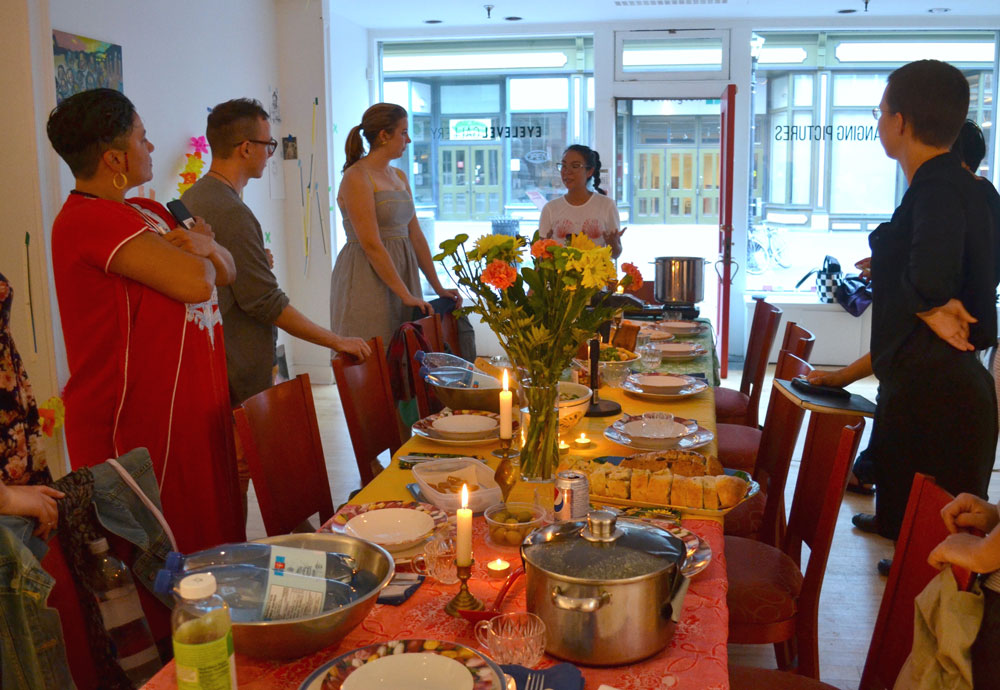 Photo: Em Lawrence
Photo: Em Lawrence
Amy Wong’s artist-talk-cum-potluck-dinner-party was part of Eyelevel Gallery’s wider Food for Thoughts project. Lower attendance to artist talks and other programmed events is a conundrum that many museums and galleries attempt to solve. However, instead of fretting about this problem, Food for Thoughts is devised to make low attendance a benefit instead of a detriment; an indicator of an event’s success, instead of a marker of its failure.
Evolving out of a recent practice of throwing dinner parties for artists working with the gallery, Food for Thoughts is a project established this year that explores the ways in which visiting and local artists can be folded into space and conversation with the local public engaging with their work. Food for Thoughts includes potluck picnics open to the public, food-adventures-cum-artist-talks where attendance is determined by a draw, and a Picnic Starter Pack that can be signed out on an individual basis. Each of these iterations takes advantage of smaller numbers to create more intimate experiences. The potluck picnics and unusual artist talks have been recorded for the purposes of creating a podcast that will extend the reach and accessibility of these events.
For instance, earlier this year Halifax-based artist anna sprague led 12 people on a whimsical tasting tour through Point Pleasant Park, where each of the 12 mini-food-oriented stations introduced participants to a different recreation of an installation or performance work from sprague’s oeuvre.
Food for Thoughts is inspired by the idea that gathering over food is one of the best ways to initiate meaningful conversation and create purposeful connections; it is a project that invites people to break bread and enter into critical (and playful) discussions about art practice and presentation.
In this way, Food for Thoughts dovetailed well with the aims of Toronto-based painter and feminist DJ Amy Wong’s collaborative summer exhibition “The Art of Hanging Pictures.”
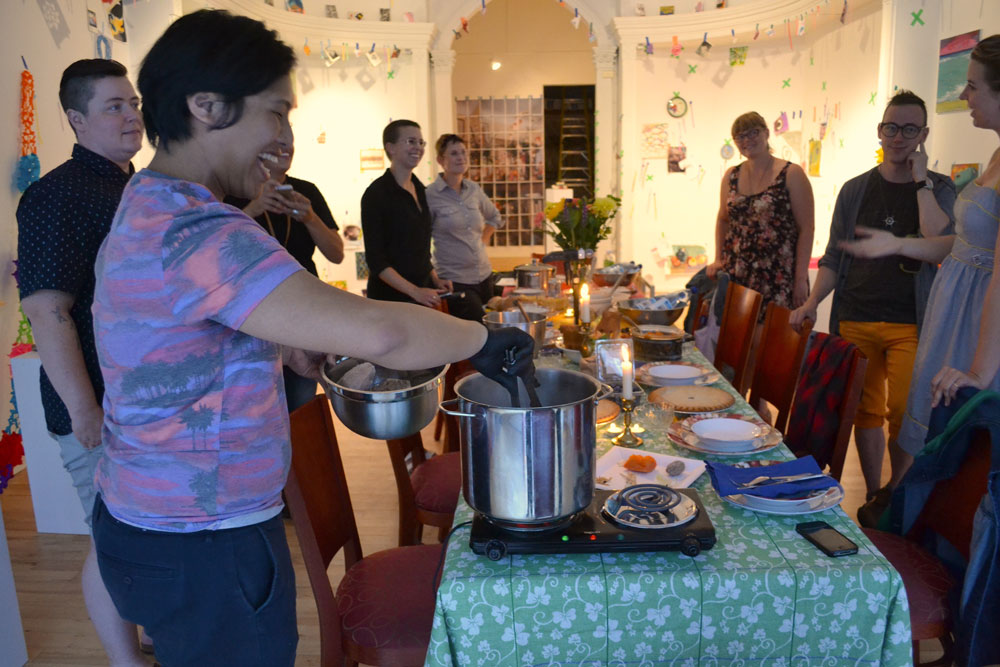 Photo: Em Lawrence
Photo: Em Lawrence
For Wong’s exhibition, Eyelevel—itinerant since 2013—temporarily inhabited a beautiful vacant retail space (home to former commercial gallery Page & Strange) on Granville Street in Halifax’s historic downtown core.
“The Art of Hanging Pictures” was a collaborative project wherein Wong solicited the local community for artwork and crafted objects (handmade by amateurs and professionals alike), mass-produced ornaments, sentimental keepsakes, objects of personal significance, things sourced from thrift stores and second hand shops, as well as collected visual ephemera.
Wong curated these community objects, along with her own paintings, drawings and personal photographs, into a busy, collage-esque arrangement on the walls, on plinths, along both edges of the double moulding, and against the window looking out onto the pedestrian courtyard. The effect was rhythmic, colourful, attractive, light-hearted, pleasurably kitschy, design sharp and hipster chic.
Through the exhibition’s call-and-response collaborative style, Wong aimed to learn about, and forge a connection with, Halifax’s community of makers and creatives. Wong wanted to connect with the hidden histories and networks of subaltern knowledge in Halifax, a city understood by outsiders to consist of a predominantly white-majority population. She also opted to explore and share the resource of her own multi-generational, diasporic familial knowledge-store as a method to connect with local communities and their stories, art and material culture.
This approach manifested in various ways throughout the exhibition.
For example: the ornate archway at the back of the main gallery space opened onto a smaller room that had a wall covered with a grid of 8.5” x 11” pieces of paper on which were printed segments of an image that enlarged a picture Wong Instagrammed of her Yee Ma’s mantle.
In the arrangement of ornaments, mementos and votives on her Yee Ma’s mantle, Wong tells me she saw similarities in the way they both organized their private spaces, moving Wong to realize how much of her own aesthetic sensibilities, and her inclination toward collecting and smashing together disparate influences she had absorbed from her intimate surroundings.
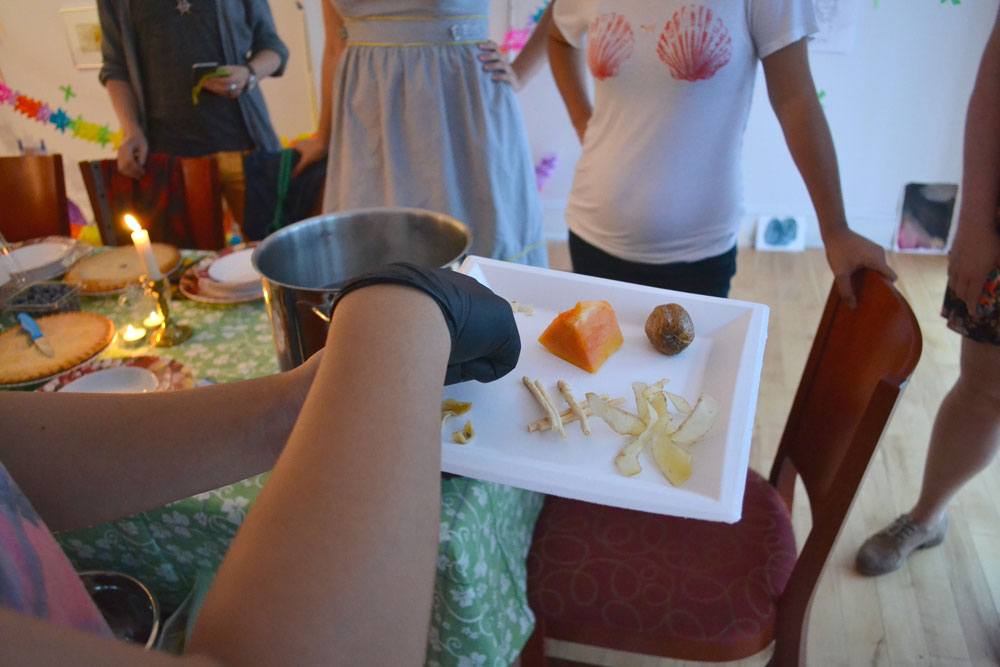 Photo: Em Lawrence
Photo: Em Lawrence
In correspondence, Wong quotes bell hooks to emphasize the importance that subcultural representations hold for diasporic people not represented in the white-supremacist notions that order popular culture as well as structure what art looks like. In her essay “Art is for Everyone,” from the anthology Drawing us In, hooks writes, “We can liberate ourselves and others by forging in resistance identities that transcend narrowly defined limits.”
Indeed, these politics rest at the core of Wong’s feminist and post-colonial creative practices as a painter and installation artist, and as a DJ—practices that focus on disrupting dominating Western narratives and white-washed spaces that crowd-out or erase the histories, lives and experiences of the marginalized inhabitants of this colonized land. Her artwork and music also push back against the pigeonholing of identity politics, and the expectation that art made by diaspora will always be reactionary and resistant.
In her practice, Wong tells me, she works through a core issue: “How to challenge reductive notions of identity through an agency of self-representation?”
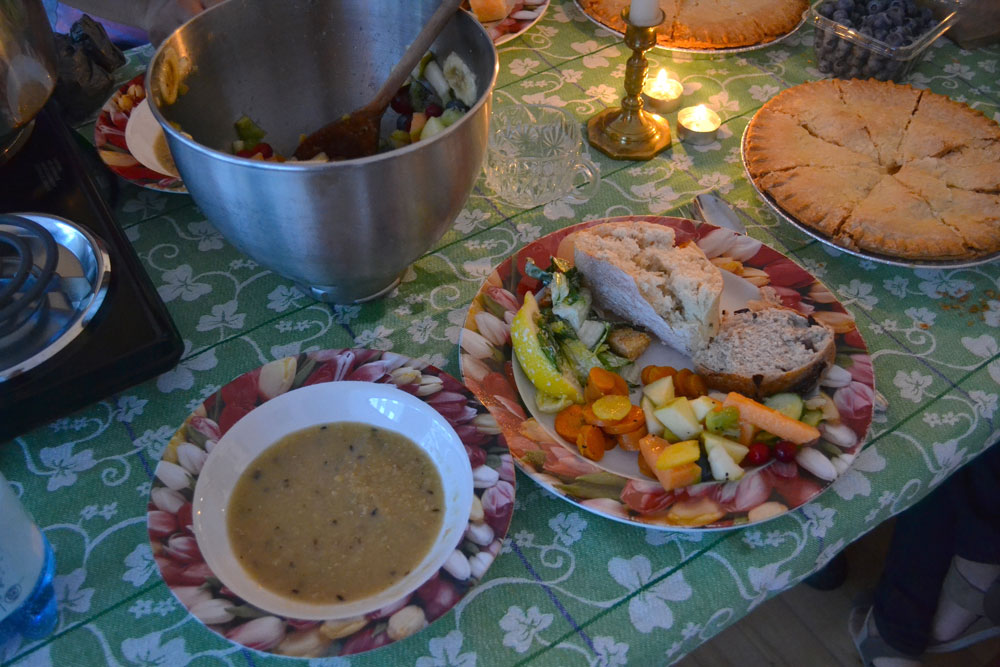 Photo: Em Lawrence
Photo: Em Lawrence
Just as Wong’s symphonic arrangement of collaboratively sourced images and objects in the Eyelevel space destabilized predominant ideologies inherent to the Modernist white-cube gallery—those that privilege individualism, romantic authorial power, the hierarchical ritual of veneration, and the legacy of white masculine genius—the talk that accompanied the exhibition in the form of a potluck dinner disrupted the conventions of the artist talk format, while simultaneously riddling the application of relational aesthetics and social practice.
In the early planning stages for “The Art of Hanging Pictures” and Wong’s time in Halifax, Eyelevel Gallery offered to host a standard didactic artist talk for Wong, or gave her the option of imagining a more dynamic forum for exchange in tune with the message and content of her project. In the spirit of the creative approach taken in previous Food for Thoughts talks, Wong opted to host a sharing session centered around food.
Given that “The Art of Hanging Pictures” was itself very much like a potluck in its collaborative spirit, a special dinner party focused on sharing and conversation was an apt accompaniment.
“I was interested in how people, like objects, hold an affective charge, and how we can charge up space like a battery, that we can be transformative or generate new energies, vibes, conversations, magic moments,” Wong reflects upon her choice to have the dinner.
In early August, a notice was emailed out and posted on social media inviting people to submit their name to a draw to attend the special potluck dinner where Wong planned to prepare a Chinese healing soup, Sei Mei Tong, as the main course.
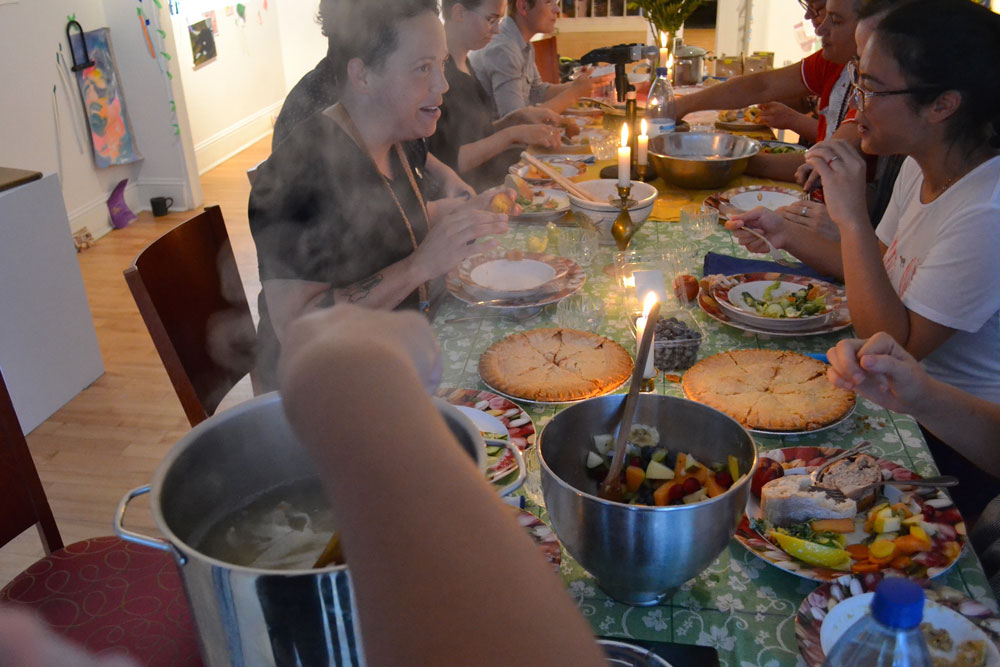 Photo: Em Lawrence
Photo: Em Lawrence
Wong’s decision not only to do a potluck dinner as her artist talk, but to serve a specific healing soup there, also intertwines with notions of the individual and the collective, the historical and the present-day.
In 2014, after an invasive medical procedure, Wong Skyped a friend and had a conversation in which they shared recipes and remedies, and reflected on the lack of safe spaces for people to share and access knowledge about the traditional holistic treatments of their own cultures as an alternative to mainstream Western medicine. The disconnection with these cultural networks of information are especially felt by diasporic people who often find accessing medical care challenging, and experience medical spaces as alienating, insensitive and phobic.
This conversation moved Wong to meditate on the importance of creating opportunities and spaces that make this kind of knowledge sharing possible. Wong has carried the powerful ritual of making healing soups with her since childhood, and has desired to draw it into her creative practice for a long time. The durational process of making the soup serves as an emblem of cultural resistance, as well as a gesture of nourishment and care for self and the community.
Thus, the Food for Thoughts dinner held in conjunction with Wong’s Halifax exhibition served as the occasion for which Wong would make Sei Mei Tong for the first time, according to her mother’s recipe (as her mother’s mother made it, and her mother’s mother before her). While the soup is a staple in Hong Kong (where her family is from) and is fairly simple to make with only four main ingredients (apricot almond, lily bulb, Solomon’s seal and dried red dates, to which pork neck and papaya are supporting ingredients), Wong had previously felt intimidated by the pressure to make it “authentic enough,” yet felt compelled to make it now especially as young people in Hong Kong as well as Chinese diaspora in Canada no longer valued making traditional soups in the same way and the practice is becoming less common.
“This event was a reason for me to be brave, and to teach and learn at the same time,” Wong writes in an email. “It is a process of translating sacred knowledge as a Diaspora person, of a particular struggle of trying to preserve that heritage.”
And on the point of performing authenticity, Wong asserts that she “was not interested in performing the role of the other, and the act of sharing this soup does highlight the way those who are invited to the table affect the way knowledge is transferred.”
As the evening unfolded, with the help of a friend, Wong cooked the soup in stages, weaving stories about herself, her background and her creative practice into its preparation.
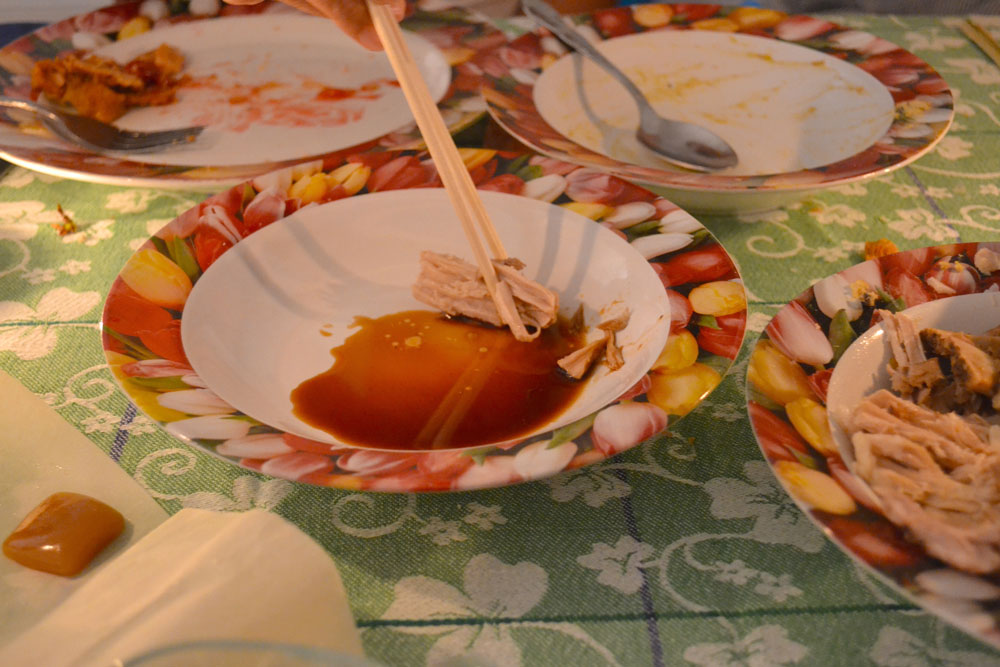 Photo: Em Lawrence
Photo: Em Lawrence
In the days following Wong’s dinner, I found myself frequently reflecting on the experience of the potluck talk, and how it brought my expectations, desires and dissatisfactions around artist talks into focus. I found it fulfilling and nourishing in provocative and unanticipated ways.
Wong’s exhibition “The Art of Hanging Pictures” provided the occasion for this artist talk, and while Wong presented certain themes in talking about herself and her project, the content and composition of the evening was determined in large part by the people at the table, and their backgrounds and interests.
Resituating the artist talk toward a smaller number of people who are implicated and activated directly in dialogue through participation moves beyond the model of the artist talk oriented toward a “generalized” audience who have a limited investment in the content or outcome of the talk.
The downside to this smaller potluck style of event, however, is that its attendance-by-draw selection limits who can access the talk. To mitigate this issue, Eyelevel Gallery documented the dinner party in photographs, and recorded the conversation with the intention that they it will one day be accessible as a podcast.
Just as Amy Wong’s “The Art of Hanging Pictures” moved to democratize the gallery space, the artist talk manifested a community in conversation over dinner for one evening.
Thanks to Bruce Barber, David Howard, Johanna Plant, Clive Robertson and Saelan Twerdy for generously engaging in conversations about artist talks, and sharing insight and related resources and books. Any error in analysis is my own.
Julie Hollenbach is a PhD candidate in the art history program at Queen’s University and a lecturer in the Division of Art History and Critical Studies at NSCAD University. She is an artist, writer and cultural worker.
This article was corrected on November 9, 2016. The original listed only pork neck bone, papaya, apricot almond and lily bulb as ingredients in Sei Mei Tong.

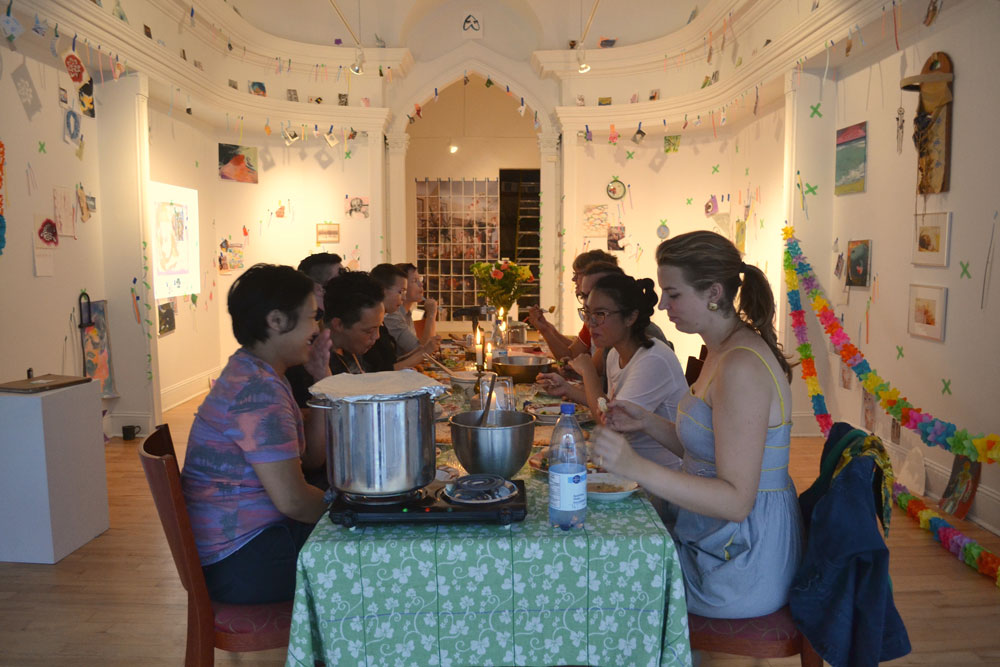 Instead of regular artist talk for her Eyelevel Gallery exhibition “The Art of Hanging Pictures,” Amy Wong held a potluck dinner. Photo: Em Lawrence.
Instead of regular artist talk for her Eyelevel Gallery exhibition “The Art of Hanging Pictures,” Amy Wong held a potluck dinner. Photo: Em Lawrence.







